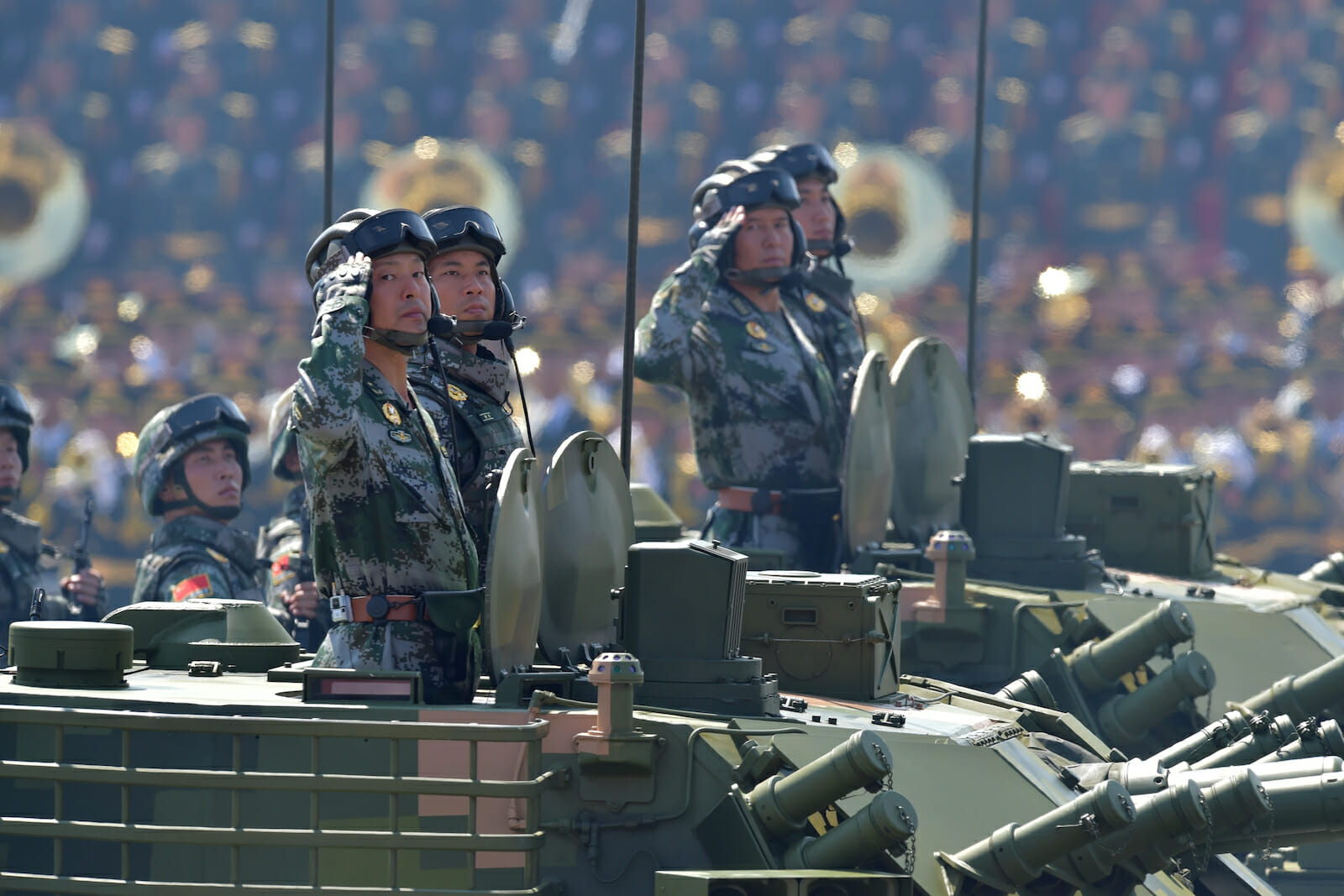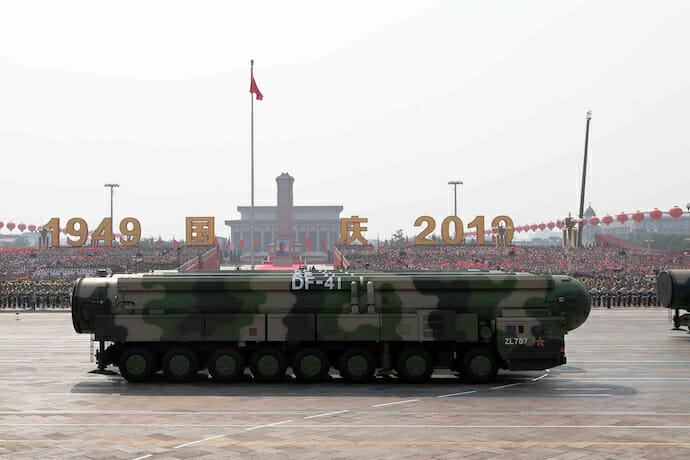
China’s Cutting Edge Weaponry
America has had a definitive military edge on China for the entire modern history of their bilateral relationship, commencing in 1979. It has been a pioneer in developing cutting edge weapon systems, and remains a leader in that regard, with futuristic weapons such as the F-35 Lightning II fighter and the Tactical High Power Microwave Operational Responder system- designed to protect military bases against swarms of drones-now in its formidable arsenal. Last week’s impressive display of weaponry by Beijing appears to have changed all that. Now, Beijing has proven that it has some highly sophisticated weapons of its own.
During the 70th anniversary parade celebrating the birth of the People’s Republic of China, Beijing’s display of firepower was evidence of the emergence of a new “strategic triad” of weaponry. The existing nuclear triad of land-based bombers, intercontinental cruise missiles, and submerged ballistic missile submarines is in the process of being replaced by stealthy drones, hypersonic cruise missiles, and special forces using advanced helicopters and small high-speed boats. It is clear that Beijing has invested a lot of money, devoted a lot of resources, and made some impressive achievements toward joining the ranks of global leaders in hypersonic weapons technology.
China’s hypersonic cruise missiles can fly at speeds up to 10 times faster than conventional cruise missiles. The Dong Feng(DF)-41 intercontinental ballistic missile is believed to be the most powerful missile in the world, with a range of up to 9,300 miles (longer than any other missile) and capable of carrying 10 independently targeted nuclear weapons. Each warhead has yields of about 150 kilotons (equivalent to 150,000 tons of TNT). At 25 times the speed of sound, it would take only 30 minutes from launch to reach the US. China has been testing hypersonic glide vehicles since 2014 and is expected to deploy its first model in 2020. The DR-8 supersonic drone can fly up to five times the speed of sound and get close enough to aircraft carriers to send targeting information back to missile launchers.

The “carrier killer” DF-21 anti-ship missile, developed over the past decade, has a range of more than 1,000 miles and far surpasses the range of any warplane on US flight decks today. The DF-17 hypersonic glider can fly beyond Mach 5, is maneuverable (designed to evade anti-missile defenses), and can carry a nuclear warhead. The HSU-001 robot underwater vehicle (i.e. drone) is used for reconnaissance against submarines and ships by diving into the water from the air. It would also be useful for secretly mining an enemy harbor. And the Sharp Sword drone is bat wing-shaped, designed for use from aircraft carriers, and possesses two internal bomb bays. China has clearly demonstrated that it is a leader in military technological innovation.
Beijing’s massive advanced weaponry buildup was a major reason why the Trump Administration withdrew from the 1987 Intermediate-Range Nuclear Forces (INF) Treaty earlier this year. China was never a party to that Treaty, so withdrawing from it enabled the US to produce counter-measures to some of Beijing’s new weaponry. During the INF’s 32-year lifespan, while Russia and the US were abiding by its terms, China was busy developing its formidable missile arsenal-within launch ranges that the INF prohibited (ground-launched nuclear and conventional cruise and ballistic missiles of 500-5,500 kilometers). As of 2017, approximately 95% of China’s missiles would have violated the INF, if China had been a signatory. Beijing certainly has no intention of joining a new INF now, which means a new arms race is sure to be the result.
Aside from increasingly disruptive cyber technologies, China’s missile-centric military buildup may be the single biggest factor contributing to the erosion of American power and influence in Asia. Beijing is, in essence, producing such powerful and technologically advanced weaponry that the US should have no incentive to engage in a conflict. Multiple range ballistic missiles that travel at many times the speed of sound provide little opportunity to be intercepted-at least, based on current counter-measure technology. So, the US has little option but to take a page out of China’s own playbook and produce a similar set of weapons with similar capabilities. If Beijing were to ever become incentivized to join Moscow and Washington at the arms control negotiating table, it would only be because Russia, and especially the US, created a counter-veiling array of weaponry that eroded Beijing’s growing advantage on the Asian battlefield.
But that will take many years to occur, as China continues on a relentless trajectory to stay ahead of the curve in creating and deploying advanced weaponry. The US, Russia, and other leading nations of the world have surely already determined that the rules of the game are changing before their eyes. Beijing has presumably not revealed everything in its impressive arsenal, nor the new technologies it may be in the advanced stages of researching. If the US wants to have any hope of keeping pace with the Chinese military, it had better discard its dog-eared, conventional playbook, and do so quickly.
This article was originally posted in the South China Morning Post.

